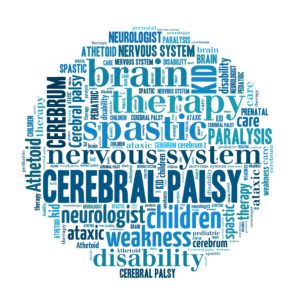
While ataxic cerebral palsy generally has symptoms that are less disabling than many other types of the condition, children with this diagnosis can still struggle to perform many activities independently. This can affect their self-esteem, social interactions, and many other aspects of their lives.
If your child lives with ataxic cerebral palsy and you believe medical negligence played a role in causing or failing to prevent the condition, you may be eligible to pursue a medical malpractice case against the doctor or hospital. Call the Birth Injury Lawyers Group today. Cerebral palsy attorney in your state can review your case and pursue damages at no out-of-pocket cost to your family.
Ataxic Cerebral Palsy Lawsuits
Medical malpractice can cause and contribute to the underlying cause of the brain damage that causes ataxic cerebral palsy in many ways. To recover damages in your child’s case in a birth injury lawsuit, we need to show that the doctor who monitored your pregnancy and delivered your baby failed to provide an acceptable standard of care, acting negligently. This may be because of actions they took or failed to take that resulted in:
- A medical error;
- A preventable birth injury; or
- Medical neglect
To help understand the case better, to make the case stronger in court, and because many states require it, your attorney will enlist the help of a medical expert witness. This will likely be another obstetrician who practices in your area. The medical expert witness will review the facts of your case and testify to what should have happened and what your doctor did improperly.
With this testimony as evidence, we may be able to hold the doctor who delivered your child liable. There are strict deadlines for how long you can wait to file, so get started today. You may be eligible to recover damages that include current and future medical care costs, other related expenses, pain and suffering, and more.
Ataxic Cerebral Palsy Overview
Ataxic cerebral palsy is a condition that causes problems with a person’s balance and coordination. This type of cerebral palsy is sometimes considered milder than other types, although it can affect some people in significant ways. Ataxic cerebral palsy is the rarest form of cerebral palsy and occurs because of damage to the motor control center in a baby’s developing brain.
Ataxic Cerebral Palsy Causes
Ataxic cerebral palsy occurs when a baby suffers brain damage during gestation, just before birth, during delivery, or immediately after birth. This damage affects the motor control centers of the brain. As mentioned, your Cerebral Palsy organization lawyer will ensure all the medical records are reviewed by one or more experts to establish liability beyond any doubt: when, how, and why the injury occurred, who was responsible for it, and how they failed to prevent it. Most birth injuries occurred because healthcare personnel failed to treat the mother’s previous or current health condition, injured the baby during delivery, or failed to treat the baby right after delivery.
The most common causes of ataxic cerebral palsy are the same things that can cause other forms of the condition. They include:
- Maternal infections
- Conditions that lead to too little oxygen making it to the baby’s brain
- Head trauma during or after delivery
- Brain hemorrhaging from fetal stroke
Ataxic Cerebral Palsy Symptoms
The primary symptom of ataxic cerebral palsy is ataxia. Ataxia itself is a group of signs and symptoms that can affect the way a person moves, eats, talks, walks, and uses their hands. Some symptoms that may occur with ataxia include:
- Difficulty swallowing
- Drooling
- Problems with speech, often slow or abrupt
- Unsteady gait
- Poor balance and frequent loss of balance
- Involuntary eye movements that may hinder vision
- Poor muscle coordination that hinders body movements
- Difficulties with tasks involving fine motor skills
Ataxic Cerebral Palsy Diagnosis and Treatment
There is no definitive test for ataxic cerebral palsy. Instead, the doctors will observe your child’s symptoms as well as look at their abilities, reflexes, movement, muscle tone, and interactions to reach a preliminary diagnosis. Then, they will likely order a brain MRI, CT scan, or ultrasound to see the damage in the brain. They may also run tests to rule out other congenital conditions.
In some cases, doctors may order an electroencephalograph (EEG) to look at electrical activity in the brain and an electromyograph (EMG) to look at the muscle activity.
Once they give your child an official diagnosis, they will begin to put together a treatment plan that addresses his unique symptoms and needs. Depending on the severity, this can range from physical therapy and occupational therapy to surgery. In general, though, children with ataxic cerebral palsy rely on therapies, braces, mobility aids, and medications as treatment.
Ataxic Cerebral Palsy Frequently Asked Questions
How do I know if my baby has ataxic cerebral palsy?
You may first begin to suspect something is wrong when your child fails to meet early milestones, such as sitting up, crawling, and walking. Once they do begin to walk, children with ataxic cerebral palsy often have a noticeably unsteady gait. Your child may have delayed language and appear extremely clumsy because of their problems with coordinated movements.
Can ataxic cerebral palsy be fatal?
Ataxic cerebral palsy is not fatal, nor is it progressive. However, it can impact your child’s quality of life.
Who is liable for ataxic cerebral palsy?
Your attorney will help you identify the party or parties liable for your child’s birth injury and the resulting ataxic cerebral palsy. In most cases, the liable party is the doctor who monitored the pregnancy and delivered the baby. The clinic or hospital may also be responsible in some cases.
What is the statute of limitations for ataxic cerebral palsy?
Each state sets its own deadline for filing medical malpractice cases. When the victim is a minor, however, they may toll this time limit to allow you to pursue a payout once you understand the full impact of your child’s injuries and disability. Your attorney can explain this in detail as well as tell you about any statute of repose that may apply.
Ataxic Cerebral Palsy Glossary Terms
- What Is Ataxia? Ataxia is a set of symptoms that result from impaired balance or coordination caused by damage to the brain, nerves, or muscles.
- What Is Occupational Therapy? Occupational therapy is an intervention that helps children and adults living with ataxic cerebral palsy to develop self-care and independent living skills.
- What Are Tremors? Tremors are involuntary movements, often shaking, that can vary in severity. Tremors commonly affect the hands, legs, head, and/or vocal cords of those with ataxic cerebral palsy.
Talk to an Ataxic Cerebral Palsy Medical Malpractice Attorney About Your Case
If your child lives with ataxic cerebral palsy, and you believe a medical error, birth injury, or medical neglect is to blame, you may have a viable medical malpractice case. A birth injury attorney may be able to help you hold the doctor or hospital liable. Call the Birth Injury Lawyers Group at 1-800-222-9529 now to connect with an attorney practicing medical malpractice law in your state.
